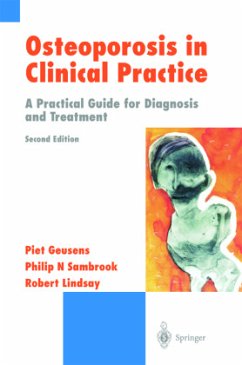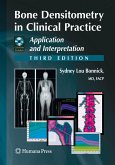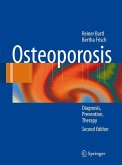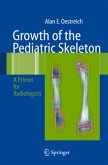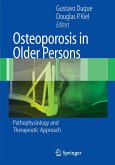The second edition of Osteoporosis in Clinical Practice provides a concise review of the current knowledge of osteoporosis. It is aimed at the busy practitioner who is increasingly involved in the management of osteoporosis and who wants accurate and practical answers to questions that arise in daily clinical practice. All the major aspects are covered including diagnosis, fractures, prevention and treatment. Concise chapters have been written by recognised experts in the area providing the reader with the most up-to-date and authoritative knowledge on each of the topics discussed. This makes the book an invaluable source of reference for those in primary care who are increasingly having to deal with patients with osteoporosis in their daily clinical practice. A must-have for every clinician treating patients with osteoporosis. It gives the latest information on diagnosis and treatment, founded on evidence-based medicine.
When I was a young intern in internal medicine,osteoporosis was defined mainly as a fracture occurring in elderly people. However,although plain X-ray examination was recognized as an insensitive way to detect osteoporosis, hypodense bone was already considered as the reflection of the disease. Over the past 20 years, con siderable progress has been accomplished. In terms of prevalence, incidence, risk factors, and the burden of osteoporosis and low-energy fracture, we can appreciate the magnitude of the problem and its impact on quality oflife. Weare wellaware that vertebral fracture, which can be acutely associated with a low clinical expression, leads to significant long-term impairments. The costs for the individual and for the health budget, Le. society,are estimated better. Wenow have a clear definition of the disease, such as low bone mass and architectural defects, resulting in increased fragility. For the former part of the definition, the clinician can use accurate and pre cise tools allowing them to distinguish how their patient's bone mineral content differs from that of a young healthy population in which fracture occurs very rarely. For the second series of fragility determinants, i. e. structure, methods are in rapid progress and will provide information to clinicians on these variables in the near future. Basicand clinical research have allowed major improvements in the understand ing of the pathophysiology of the disease. Newgenes implicated in lowand/or high bone mass have been characterized.
When I was a young intern in internal medicine,osteoporosis was defined mainly as a fracture occurring in elderly people. However,although plain X-ray examination was recognized as an insensitive way to detect osteoporosis, hypodense bone was already considered as the reflection of the disease. Over the past 20 years, con siderable progress has been accomplished. In terms of prevalence, incidence, risk factors, and the burden of osteoporosis and low-energy fracture, we can appreciate the magnitude of the problem and its impact on quality oflife. Weare wellaware that vertebral fracture, which can be acutely associated with a low clinical expression, leads to significant long-term impairments. The costs for the individual and for the health budget, Le. society,are estimated better. Wenow have a clear definition of the disease, such as low bone mass and architectural defects, resulting in increased fragility. For the former part of the definition, the clinician can use accurate and pre cise tools allowing them to distinguish how their patient's bone mineral content differs from that of a young healthy population in which fracture occurs very rarely. For the second series of fragility determinants, i. e. structure, methods are in rapid progress and will provide information to clinicians on these variables in the near future. Basicand clinical research have allowed major improvements in the understand ing of the pathophysiology of the disease. Newgenes implicated in lowand/or high bone mass have been characterized.
From the reviews of the second edition:
"The authors have gathered a number of specialists in the field of osteoporosis to give us a general review of the latest clinical knowledge. ... This book is of great value for every clinician dealing with osteoporosis in adults." (N. Allington, Acta Orthopædica Belgica, Vol. 71 (2), 2005)
"During the last 20 years, considerable progress has been made in the knowledge of osteoporosis in diagnosis as well as in treatment, be it preventive or curative. P. Geusens, P. N. Sambrook and R. Lindsay offer us a comprehensive analysis of the subject in their second edition of Osteoporosis in Clinical Practice." (L. Balabaud, European Journal of Orthopaedic Surgery & Traumatology, Vol. 16, 2006)
"The authors have gathered a number of specialists in the field of osteoporosis to give us a general review of the latest clinical knowledge. ... This book is of great value for every clinician dealing with osteoporosis in adults." (N. Allington, Acta Orthopædica Belgica, Vol. 71 (2), 2005)
"During the last 20 years, considerable progress has been made in the knowledge of osteoporosis in diagnosis as well as in treatment, be it preventive or curative. P. Geusens, P. N. Sambrook and R. Lindsay offer us a comprehensive analysis of the subject in their second edition of Osteoporosis in Clinical Practice." (L. Balabaud, European Journal of Orthopaedic Surgery & Traumatology, Vol. 16, 2006)

